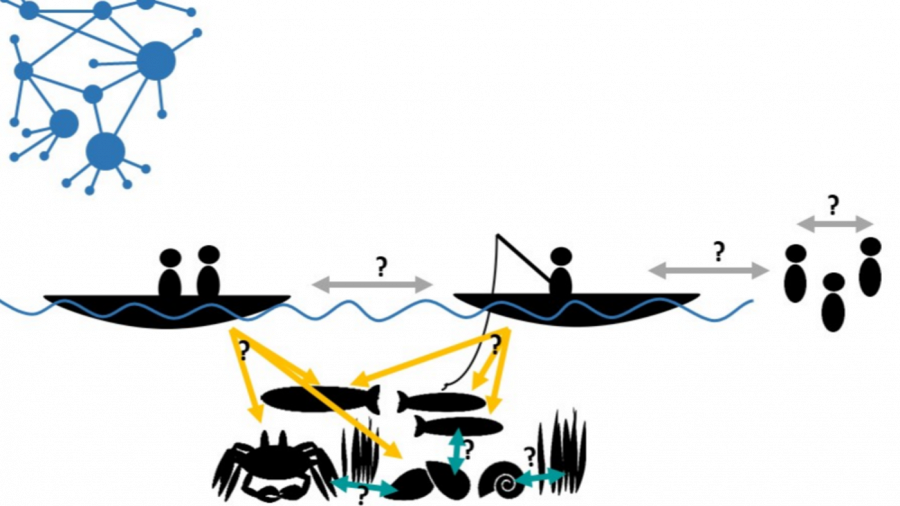Networks – more than the sum of their parts

People extracting wood from a forest, tourists marveling at big rock formations, or fishers capturing crabs in a coastal lagoon: these are examples of human-nature relations, also called social-ecological systems. As the world grows closer together, many of these interactions become increasingly complex. Climate change effects, resource extraction, and pollution represent challenges to the sustainability of many social-ecological systems. Understanding the different ways people engage with nature and interact with each other helps to design management strategies and mitigation measures.
In this work, we look at how social and natural scientists have used a particular tool – network analysis – to explore and understand social-ecological systems. Network analysis is the study of a system represented as its discrete members: individuals or groups of people, biological species, or ecosystem patches. The network emerges when the interactions among these entities are identified and illustrated. Interactions can be, for example, collaboration, exchange of information or money, selling of a resource such as a fish, active movement of animals, or passive transport of pollen. Many scientists use network structures to understand how interactions shape system dynamics and processes to identify key actors or vulnerable points.
Network analysis has been used in a wide range of settings, though – it seems – each researcher uses their own vocabulary to describe the different network parts. However, using consistent language helps to communicate, to compare, and to join efforts. This is why we wanted to systematize the existing research according to how authors conceptualized networks to describe human-nature interactions. Were only humans considered, only ecosystem parts, or both? Based on the degree to which both realms (society and nature) are integrated in the analysis, we propose three categories of social-ecological networks: From Type I, networks looking at only one realm (society or nature), to Type III, integrating actors from both realms (society and nature) and all interactions therein. Our results show that there are many different ways of constructing a network describing a social-ecological system, but that increasing complexity (Type III networks) imposes methodological challenges. Selection of the appropriate network type should be based on the question at hand. Our aim was to provide a broad overview that should help to discuss benefits and drawbacks of the different means of conceptualizing a social-ecological network. Thus, a research team wanting to construct a social-ecological network for their particular setting can draw from our experience and find guidance in the jungle of terminology and concepts.
The original publication:
Kluger LC, Gorris P, Kochalski S, Müller MS, Romagnoni G (2020). Studying human-nature relationships through a network lens: A systematic review. People and Nature DOI: 10.1002/pan3.10136
https://besjournals.onlinelibrary.wiley.com/doi/epdf/10.1002/pan3.10136
Plain language summaries in English you can find here:
https://besjournals.onlinelibrary.wiley.com/action/downloadSupplement?doi=10.1002%2Fpan3.10136&file=pan310136-sup-0001-Summary.pdf



